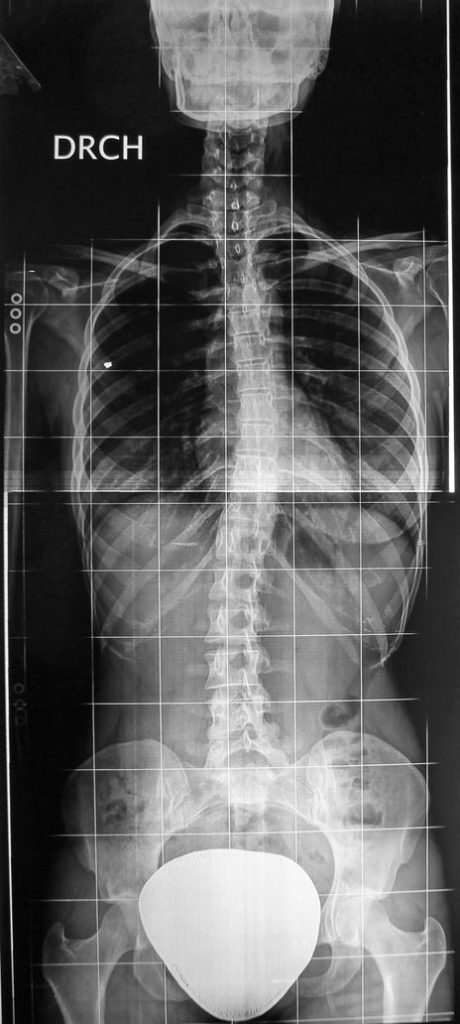 You might have heard of the term spinal subluxation before, but if you have never experienced it, chances are that you have no understanding of what it is, and the effect it can have on your health. Well, spinal subluxation can be described as a misalignment of the spine’s vertebrae. Spinal subluxations happen because of many reasons, and the side effects vary. Nevertheless, one common thing about spinal subluxations is that they have a negative effect on your health and should be corrected as fast as possible. This article talks more about spinal subluxations, and helps you determine whether they can be a problem in your life.
You might have heard of the term spinal subluxation before, but if you have never experienced it, chances are that you have no understanding of what it is, and the effect it can have on your health. Well, spinal subluxation can be described as a misalignment of the spine’s vertebrae. Spinal subluxations happen because of many reasons, and the side effects vary. Nevertheless, one common thing about spinal subluxations is that they have a negative effect on your health and should be corrected as fast as possible. This article talks more about spinal subluxations, and helps you determine whether they can be a problem in your life.
What are Spinal Subluxations?
In simple terms, a spinal subluxation occurs when one or more bones in an individual’s spine move out of position, causing extra pressure or irritating the nerves in the spine. When each of your vertebrae is in its right position, nerve fibers are able to pass through without any issues. Through this, nerve pulses are able to communicate well with the brain at high speeds.
Although the spinal column is supposed to be sturdy, the vertebrae might become misplaced. When this happens, it leads to a condition referred to as a vertebral subluxation. Some common causes of spinal subluxations include car accidents, carrying heavy objects for a prolonged time, sports injuries, and sitting for too long. Since the nervous system controls every function of your body, any interference could affect your body’s normal function. When spinal subluxations happen and remain untreated over a long time, they cause ongoing changes in the body, causing damage to the body structure and function.
Symptoms of Spinal Subluxations
The following symptoms and health effects might accompany subluxations:
- Headaches
Headaches happen if the misalignments in your spine cause tension and pressure to build up. If this tension is not released, it builds up around the base of your head, causing headaches. Although other things might cause headaches, spinal subluxations should not be ignored if you have also been experiencing pain in the joints, back, or neck.
- Pain in the Neck or Back
This kind of pain is an obvious symptom of spinal subluxation. Pain can come from either the neck or back, or both body parts. This pain varies in severity, as some people will experience a lot of pain and others go through a mild discomfort. If you are suffering from this kind of pain, you should consider being tested for a misalignment of the spine.
- Inability to Move
Pain resulting from spinal subluxations could make it difficult for you to move. In fact, you might notice inflexibility or stiffness when performing certain tasks or activities that you used to do effortlessly. If you happen to experience this symptom, you should consider looking for professional help. If you used to exercise, do not limit doing so because this can make your condition worse.
Spinal Subluxations – Worst Case Scenario
If spinal subluxations go undetected for a very long time, body organs might suffer extensive damage without your knowledge because your body cells will not be in a position to send out alarms appropriately. Due to this reason, spinal subluxations might immensely affect your health without any visible signs. If it is a serious case, it might be too late to remedy the problem. To avoid this, you should consider pursuing early treatment to prevent advancement of spinal subluxation.
Identifying Spinal Subluxations
Spinal subluxations are identified through a chiropractic exam. The test usually consists of radiography and palpation. This entails the use of x-rays and a manual exam. Despite this, not all chiropractors use x-rays when diagnosing spinal subluxations. They mostly do manual examinations, where they check the alignment of your pelvis and other joints. This helps them get an understanding of what is going on in your spine.
According to experts, spinal subluxations are not characterized by too much movement, but by decreased motion. This means that correcting a lot of movement might not be the main goal of your chiropractic treatment. Nevertheless, it can also be treated because it might happen in nearby joints. However, your chiropractor will focus more on the joints with restricted movement.
Spinal subluxations occur after a misalignment of the spine. They can be accompanied by several symptoms such as pain in the back or neck, headaches, and inability to move. If you suspect a spinal subluxation, the best action to take is to get the problem checked out and treated by visiting a chiropractor. Chiropractors first identify the issue and then treat it by adjusting the vertebrae into the right places. Doing this helps eliminate the aforementioned symptoms and brings many benefits to the body. If you have spinal subluxation, consider visiting a chiropractor soon to boost your overall health.
